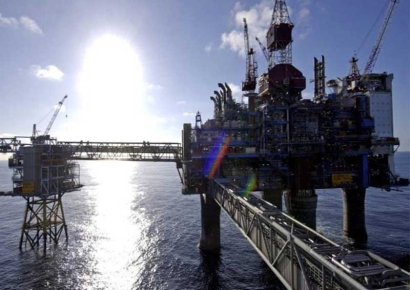
Carbon sequestration takes CO2 from industrial fumes or other sources, then stores it, most often in the soil. Carbon can remain in the ground for 70,000 years or more, effectively stopping these emissions from entering the atmosphere. The underground carbon can also feed into plants through photosynthesis, acting as fertilizer.
Sequestration has many benefits, but it also carries some significant pitfalls, making it a point of debate. Here’s a closer look at carbon sequestration, its benefits, downsides and potential future.
The technology behind carbon sequestration first emerged in the 1920s, albeit for a different purpose. CO2 scrubbers, which remove carbon dioxide from the air, came out during this time to remove impurities from methane before selling it. Now, these technologies provide the first step in the carbon capture process.
Scientists first proposed a carbon capture plant in 1938, though the sequestration part of the process wouldn’t come until much later. The first commercial project to inject carbon into soil started in 1972, and the two sides came together in Norway in 1996. This was the first integrated carbon capture and sequestration plant.
Carbon capture and storage technologies have become far more efficient since the Sleipner project in Norway. Consequently, they’ve grown more common and have gained additional supporters, with oil companies often being some of the most vocal. There are now 43 large-scale commercial carbon sequestration plants globally, capturing more than 30 million tons of CO2 annually.
Carbon sequestration has many benefits, most notably stopping greenhouse gas emissions from entering the atmosphere. Removing the environmental impact of this pollution could help fight climate change during the slow transition to clean energy sources.
Sequestration can also regenerate depleted soil, improving plant growth. This can lead to more natural CO2 removal through photosynthesis, further mitigating carbon emissions. Using sequestration for these processes will also reduce the need for fertilizers, preventing erosion.
Sequestration prevents erosion and strengthens plant life, so it will help reduce climate change-induced flooding. On top of mitigating events that cause property damage and endanger residents, this will protect local plant and animal life that floods could threaten. Reducing fertilizer use will also safeguard the water sources themselves, preventing chemicals from contaminating them.
Carbon capture and sequestration has many benefits, but it also has its fair share of downsides. Many of these technologies are energy-intensive. Most electricity generation comes from fossil fuels, so facilities may not improve their overall carbon footprints by implementing these systems.
Despite advances over time, these technologies are still expensive and challenging to implement. These barriers could keep businesses from pursuing them, and they may continue to generate harmful emissions out of convenience.
Sequestration doesn’t require new energy sources, so it could support reliance on fossil fuels. Companies that get carbon credits for sequestration could feel they’ve achieved sustainability after implementing it, reducing their drive to move to zero-emissions processes. These credits could also contribute to greenwashing, letting businesses claim they’re more sustainable than they really are.
Thankfully, recent research holds promise for carbon capture and sequestration’s future. Much of it has centered on the solvents that extract CO2 from industrial fumes. New solvents could remove carbon at $47.10 per metric ton, while average commercial options linger around $58.30 per ton.
These new systems also require less energy. They need 17% less energy than conventional carbon capture solutions, improving related emissions.
As carbon sequestration technologies improve, legislative change will be necessary to ensure it remains sustainable. Tighter restrictions around carbon credits and renewable energy requirements could prevent greenwashing and motivate facilities to go further. That way, sequestration could remove carbon without distracting from longer-term solutions.
Like many sustainability technologies, carbon sequestration requires some nuance to apply effectively. The practice has many benefits, but businesses and governments must see it as a temporary aid, not the final solution. Moving to zero-emissions processes is still the most important goal.
Regulatory bodies and companies should address the practice’s shortcomings to help in the fight against climate change. Carbon sequestration can mitigate emissions, foster plant growth and protect the soil when applied appropriately.
Author bio:
Jane Marsh works as an environmental and energy writer. She is also the founder and editor-in-chief of Environment.co.

